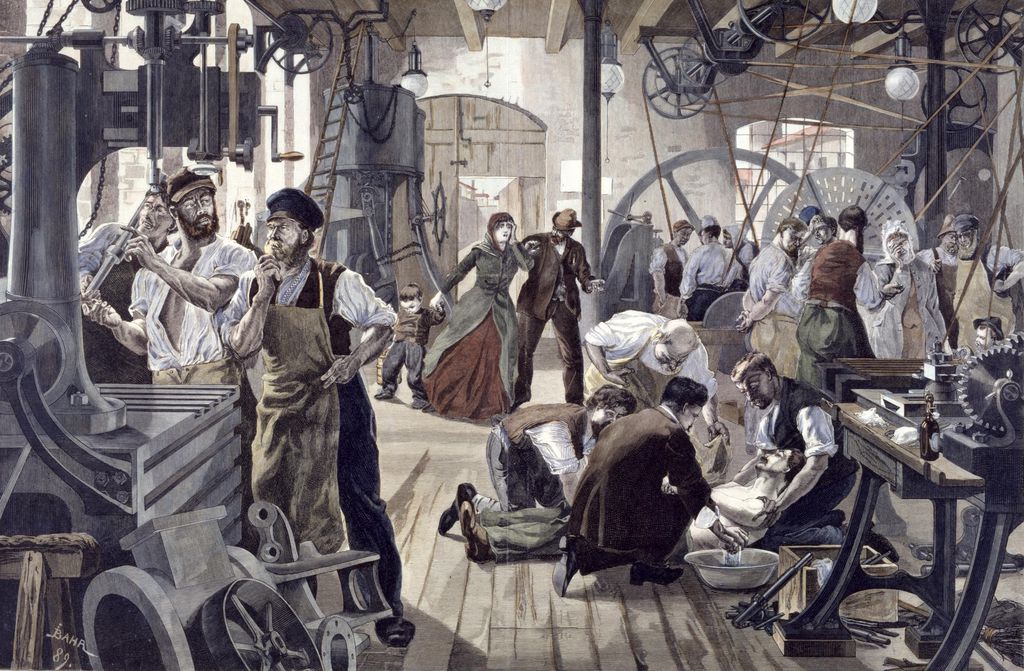Abstract
Mechanization in the era of industrialization not only accelerated
and rationalized manufacturing processes but also created new hazards
for the workers who operated machinery. In Germany, both the rise of
Social Democracy, which represented workers’ concerns, and Bismarck’s
introduction of a social insurance system, which included the
legislation of accident insurance in 1884, helped raise public awareness
of occupational safety. Thereafter, workers’ well-founded desire to
avoid injury increasingly dovetailed with the interests of factory
owners, who had a stake in keeping their qualified workforce healthy,
and of authorities, who wanted to minimize social costs resulting from
invalidity. Published in the Leipzig
Illustrirte Zeitung, this graphic
scene was a promotion for the Deutsche
Allgemeine Ausstellung für Unfallverhütung [German Exhibition for
Accident Prevention] in Berlin. Elements of the scene would have been
all too familiar to factory owners, workers, and their families – the
men who care for their injured colleague, the agitated workers who stand
nearby, the men who inspect the machinery responsible for the accident,
and – most dramatic of all – the injured man’s wife, who “accompanied by
her child, had just arrived to bring her working husband some food, and
now beholds him lying there lifeless on the ground, perhaps a cripple
for life.” (German Historical Museum,
Bismarck: Preußen, Deutschland und
Europa. Berlin, 1990, p. 423). This engraving was executed by
artist Johann Bahr (1859-1929), a former machine builder with plenty of
relevant work experience to draw upon.
